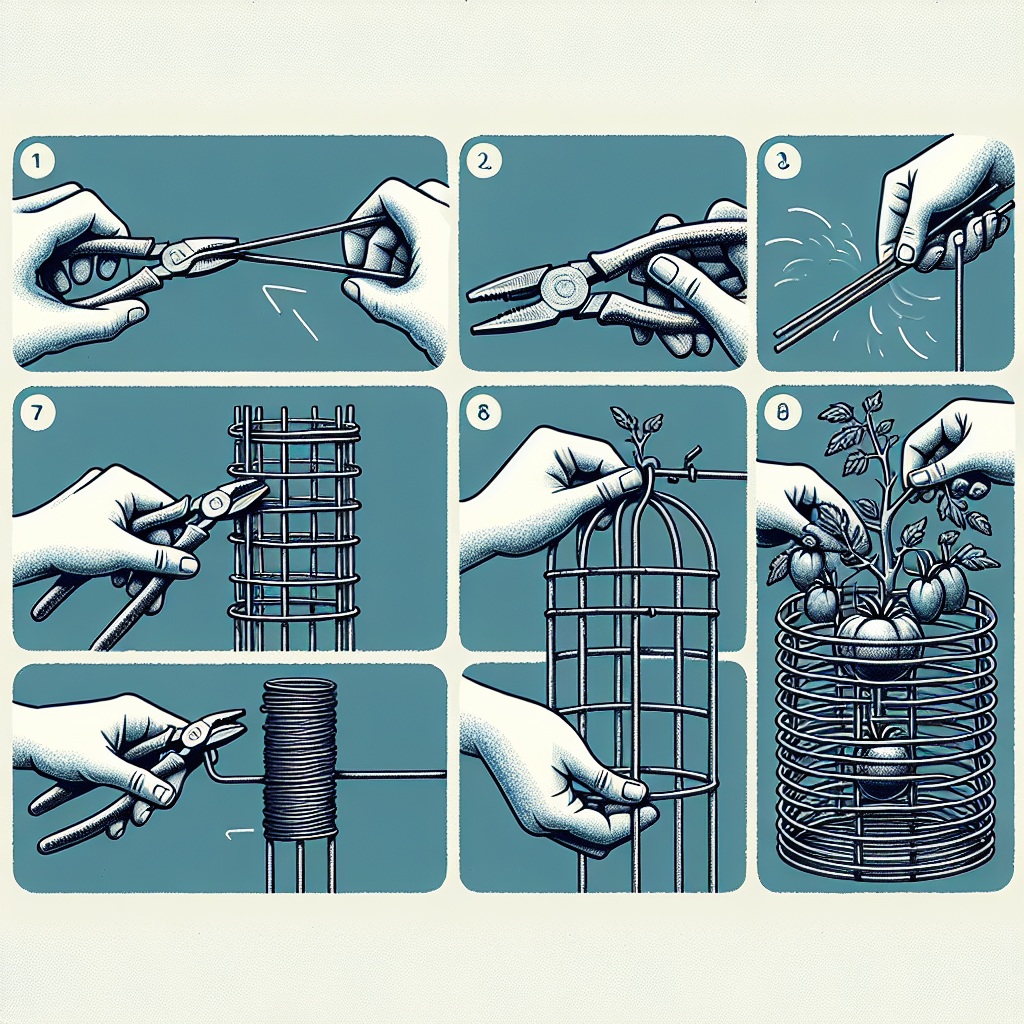
How to make tomato cages from wire
How to Make Tomato Cages from Wire: A Comprehensive Guide
Growing tomatoes can be an incredibly rewarding experience, but it often comes with its own set of challenges—especially when it comes to supporting the plants. One of the best solutions for ensuring robust, healthy tomato plants is using a sturdy cage. In this article, we’ll explore the process of creating tomato cages from wire, a method that is not only cost-effective but also allows you to customize the size and shape to fit your garden’s unique needs.
Why Use Tomato Cages?
Tomato cages provide critical support as plants grow, helping to keep them upright and ensuring good air circulation. This can reduce disease risk and yield healthier fruit. Here are some benefits of using tomato cages:
- Improved Airflow: Cages prevent plants from sprawling on the ground, enhancing airflow around the leaves and reducing the chances of disease.
- Better Sun Exposure: Elevating the plants helps them to receive sunlight from all angles, resulting in more fruitful harvests.
- Space Efficiency: Using cages allows you to grow vertically, saving space in your garden.
- Reduced Weeding: With plants off the ground, weeds are less of a problem as they’re less likely to encroach on your tomato plants.
- Ease of Harvesting: Caging makes it simpler to access fruits, especially as they grow large and heavy.
Materials You'll Need
Creating your own wire tomato cages is straightforward, especially if you have the right materials. Here’s a list of what you need:
- Wire Fencing: 4-foot or 5-foot height is ideal; choose a gauge that is sturdy enough to support the plants.
- Wire Cutters: For cutting the fencing material to your desired sizes.
- Gloves: To protect your hands from sharp edges while handling wire.
- Support Stakes (optional): For additional stability, especially in windy areas.
Steps to Create Your Own Tomato Cages
Now that you have gathered your materials, let’s delve into the practical steps of making tomato cages from wire. Just follow these simple instructions!
- Determine the Size: Decide how tall and wide you want your cages. Typically, a height of about 3-6 feet works well for most tomato varieties.
- Cut the Wire Fencing: Using your wire cutters, measure and cut the wire fencing to your determined length. For instance, if you wish to make a cage that is 5 feet tall and 2 feet wide, cut a sheet that is 5 feet in height and about 6-8 feet in length.
- Form the Cage: Bend the cut wire fencing into a cylindrical shape. Overlap the ends slightly and secure them using additional wire or zip ties. Ensure that the top is wider than the bottom to allow plants ample room to grow.
- Secure the Cage to the Ground: Push the base of the cage into the soil firmly (about 6-12 inches deep) for stability. If you live in a particularly windy area or have tall plants, consider using support stakes on the exterior of the cage.
- Repeat for Additional Cages: Continue this process for as many cages as you need, spacing them adequately in your garden.
Tips for Successful Tomato Cage Use
Having constructed your wire tomato cages, here are some additional tips to ensure they function effectively throughout the growing season:
- Choose the Right Tomato Variety: Some varieties are more prone to sprawling, so choose a suitable variety that can effectively utilize the support you provide.
- Water and Feed Regularly: Consistent watering and feeding will help your plants grow strong enough to utilize the cages fully.
- Prune Wisely: Regular pruning can help maintain airflow and promote healthy fruit production.
- Monitor for Pests: Keep an eye out for pests that can thrive when plants are too close to the ground.
Maintenance and Storage of Tomato Cages
At the end of the growing season, maintaining your tomato cages is crucial for their longevity. Here are a few maintenance tips:
- Clean the Cages: Remove all plant debris and dirt to prevent disease transmission.
- Store in a Dry Place: If you're using metal cages, store them outdoors or in a shed to prevent rust.
- Repair Damages: Check for any bent wires or broken ends and repair them before the next planting season.
Alternative Designs for Tomato Cages
While the cylindrical wire cage is a classic method, there are several alternative designs you may consider:
- Wooden Cages: Build a square or rectangular cage using wooden stakes and string it up with twine or wire. This design can be especially appealing for rustic gardens.
- Tomato Towers: Create a tall, vertical structure using wooden posts and wire, allowing your tomatoes to climb while providing ample support.
- Pyramid Cages: Form a pyramid shape using sturdy horizontal and vertical supports for an eye-catching support system.
Conclusion
Understanding how to make tomato cages from wire gives you the freedom to customize your garden to meet the needs of your crops while also saving you money. Whether you prefer standard wire cages, wooden alternatives, or even tomato towers, having a support system in place can lead to a more bountiful harvest and more manageable gardening experience. By providing consistent care and maintenance, your tomato cages can last many seasons, enabling you to enjoy fresh tomatoes year-round!
“The best way to ensure a good crop is to give your plants the support they need.”
With this comprehensive guide, you’re well-equipped to tackle your tomato-growing journey. Happy planting!
By Guest, Published on August 14th, 2024